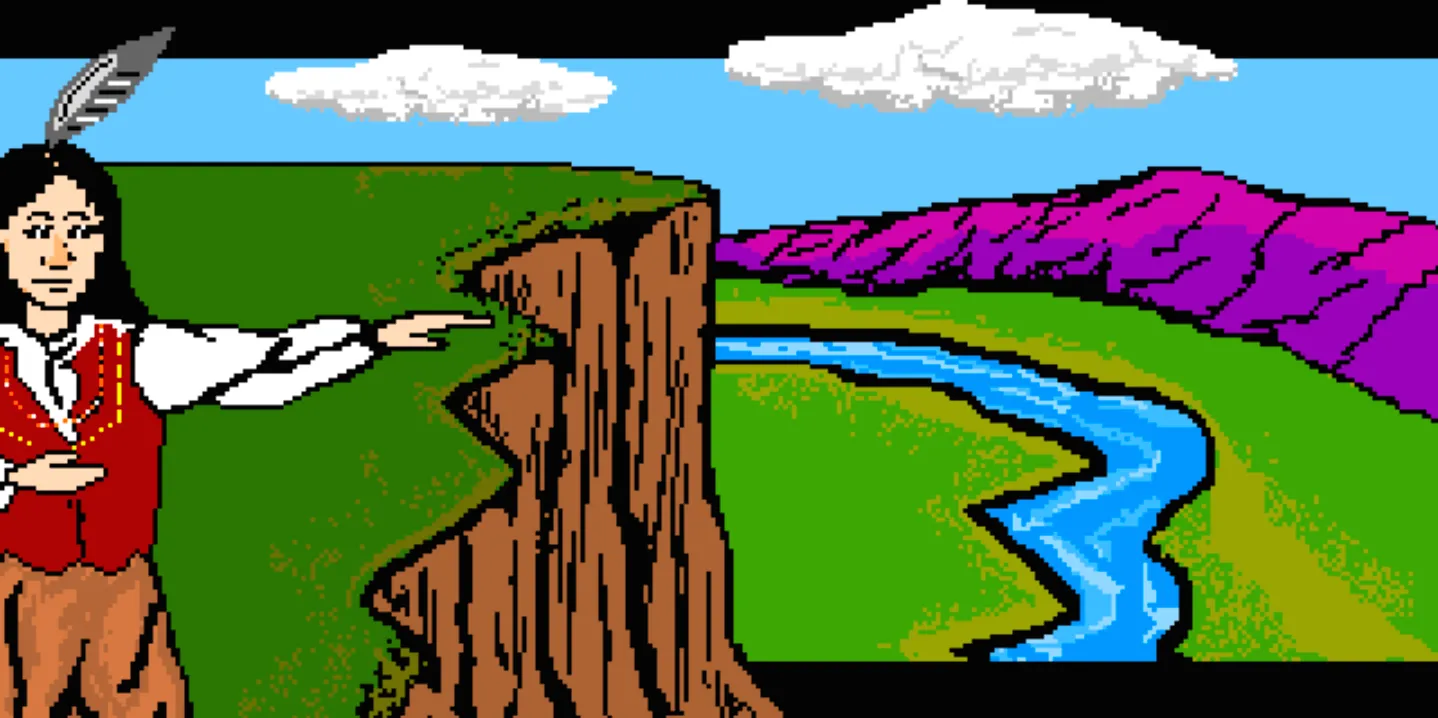Developer: R. Philip Bouchard, MECC
Publisher: MECC
Systems: Apple II (multiple prior and subsequent releases and systems, see description)
Year of release: 1985
Genre: Strategy/Educational
Time period: Past
Location: American West/Midwest
Tribe: Pawnee, Sioux, Shoshone
Character Types: NPC
“The Pawnee are the mortal enemies of the Sioux. I would not hesitate to kill any Pawnee I met. But I have never killed a white man. All I ask from the white man is to leave me alone, and to leave my buffalo alone”
-A Sioux Brave (quoted from an in-game dialog screen)
- Western-themed game
- Indigenous NPCs are mostly background characters that only appear around landmarks
- Players can choose to talk with Indigenous characters, and will find references to Native peoples as guides, intertribal conflict, and more
The Oregon Trail is an educational game created in the 70’s to teach eighth graders about pioneer life. The game went through many iterations as it both evolved with emerging technologies and in response to player experiences. The 1985 version is the first commercial graphical release and is iconic for the series. Players take on the role of a white pioneer head of household moving West. The encounters the player has with Indigenous NPCs are limited and shaped by this positionality. Interaction consists of trading with indigenous people at times along the route, conversation options (like the above quote from an unnamed “Sioux brave”), and occasionally glimpses of them in destination images (like the Fort Walla Wall screen below).

Ultimately, the game is primarily about resource management. Players begin the game by planning for their westward trip, selecting items and balancing their funds. Invariably, they must hunt for their food using firearms and bring back a specific weight of food. Often, players will kill far more food than they can carry, leaving the rest of the food behind. Strategy is important because one should hunt often enough to survive winter or areas of the map with fewer food supplies. Members of a player’s party can and will fall ill and die. The goal is to have as few NPCs in as possible die along the trail and to reach the end of the game.

The Oregon Trail is mechanically simple, as it was designed to be played by children on early computers in the 70s and 80s. The main interface players interact with is a menu (seen below) displaying a list of choices for players to make. The hunting mini-game does require some twitch reflexes and hand-eye coordination to identify and successfully shoot targets. The Oregon Trail is a speedy game, with some play-throughs lasting as few as 30 minutes or less.
Interestingly, the game does include an early example of a difficulty setting. At the onset of the game, players choose one of three occupations to take up once they reach Oregon: banker, farmer, and carpenter. The three occupations act as a scale of difficulty, the banker is the easiest setting, the carpenter is average, and the farmer is the most difficult. If players decide to become a carpenter, they are awarded double points at the end of the game, and as a farmer, their points are tripled.

TBA
Insert video here.
